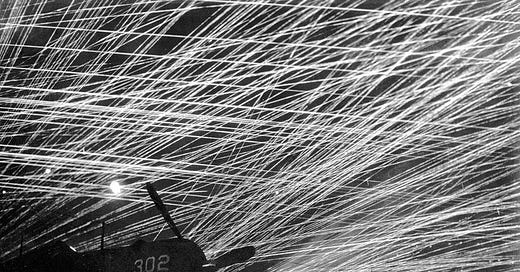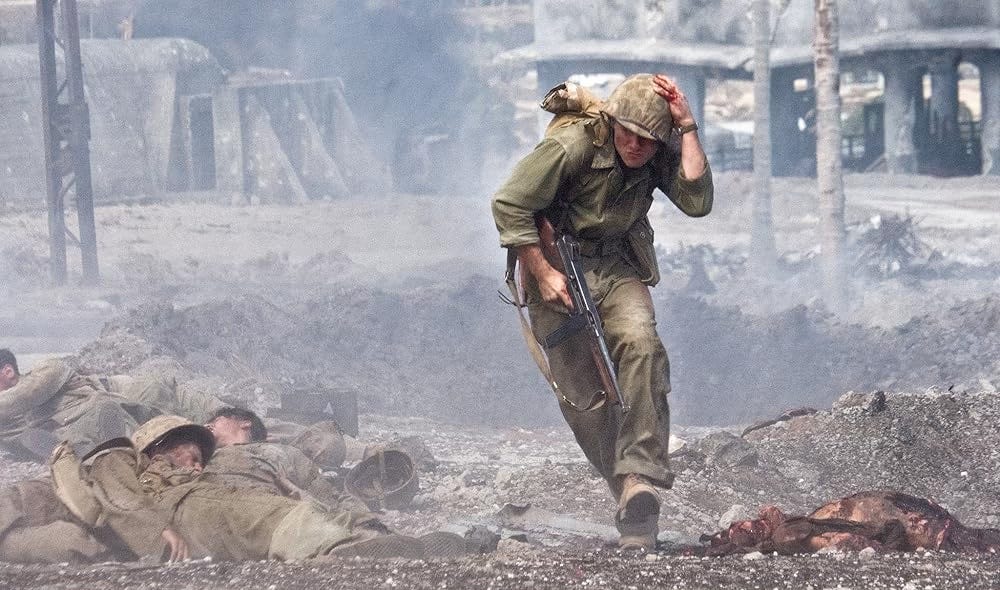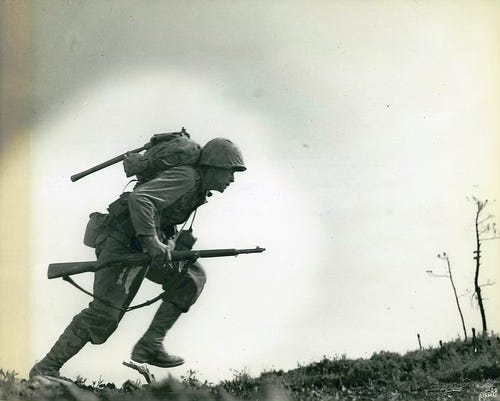Pivotal Battles in the Pacific of WWII
A Journey Through Guam, Peleliu, Iwo Jima, and Okinawa to Honor the Past and Inform the Future
I must admit, my initial understanding of the Pacific Theater in World War II was limited to iconic events like Pearl Harbor, the flag raising at Iwo Jima, some intense jungle fighting on remote islands, and the dropping of the atomic bombs. However, I’ve come to realize there’s a vast expanse of history beyond these moments, rich with lessons that are still relevant today. Seeing what’s happening in Europe whilst fighting rages in the Pacific especially blows my mind.
In our upcoming philanthropic experience, we’ll delve into the profound lessons from four pivotal battles: Guam, Peleliu, Iwo Jima, and Okinawa. These engagements not only determined the trajectory of the war but also impart enduring insights into resilience, strategic planning, and the profound human costs associated with conflict.
This immersive experience offers a unique opportunity to reflect on the past and its connections to today’s world. As we traverse the very grounds where these monumental battles unfolded, we’ll engage with narratives of courage and leadership that continue to inspire. This exploration serves both as a tribute to those who fought and as a foundation for informed discussions on current global challenges.
I invite you to prepare for and follow along with our journey. Dive into the curated content, share it with friends, and join us in honoring the sacrifices that have shaped our present and will influence our future. If there’s more you’re curious about beyond what’s shared here, feel free to reach out—let’s explore this history and power of lived ideas together.
--
Battle of Guam (July 21 – August 10, 1944):
• Liberation of U.S. Territory: Guam was the first U.S. territory to be liberated from Japanese occupation during World War II. The island had been captured by Japanese forces in December 1941, shortly after the attack on Pearl Harbor.
• Challenging Terrain: The island’s dense jungles and rugged terrain posed significant challenges for U.S. forces. Japanese defenders utilized the landscape to establish fortified positions, leading to intense jungle warfare.
• Civilian Resistance: Guamanian civilians played a crucial role by providing intelligence to U.S. forces and assisting in sabotage efforts against the Japanese occupiers, despite the risks to their own safety.
• High Casualties: The battle resulted in approximately 7,000 Japanese and 1,700 American deaths, highlighting the fierce resistance encountered during the island’s recapture.
• European Theatre Juxtaposition: Operation Cobra -- While Guam was being liberated, Operation Cobra (July 25 – 31, 1944) was launched as the last surge of Normandy campaign, breaking through German defenses and leading to the liberation of Paris in August 1944.
Battle of Peleliu (September 15 – November 27, 1944):
• Intense Combat: The Battle of Peleliu is often cited as one of the most intense and fiercely contested battles in the Pacific theater. Lieutenant General Roy Geiger, commander of the III Amphibious Corps, repeatedly referred to it as the toughest battle of the Pacific war.
• High Casualty Rates: The battle resulted in the highest casualty rate of any amphibious assault in American military history. Of the approximately 28,000 Marines and infantry troops involved, about 40% were killed or wounded, totaling around 9,800 casualties.
• Challenging Terrain: The island’s rugged terrain, particularly the Umurbrogol Mountain (nicknamed “Bloody Nose Ridge”), provided the Japanese defenders with natural fortifications, making the battle exceptionally grueling for U.S. forces.
• Extended Duration: Originally expected to last only a few days, the battle extended over two months, with organized Japanese resistance continuing until November 27, 1944.
• European Theatre Juxtaposition: Operation Market Garden: During the protracted Battle of Peleliu, Operation Market Garden (September 17 – 25, 1944) was conducted in the Netherlands. Both operations faced unexpected resistance and resulted in significant casualties, with debates over their strategic value.
Battle of Iwo Jima (February 19 – March 26, 1945):
• Iconic Flag Raising: The image of six U.S. Marines raising the American flag atop Mount Suribachi became one of the most iconic photographs of World War II, symbolizing hope and perseverance.
• Strategic Importance: Capturing Iwo Jima provided the U.S. with a critical base for fighter escorts and emergency landings, significantly aiding subsequent bombing campaigns over Japan.
• Ferocious Defense: Japanese forces constructed an extensive network of tunnels and bunkers, resulting in some of the fiercest fighting of the Pacific campaign. Approximately 21,000 Japanese soldiers defended the island, with only about 200 taken prisoner. Some Japanese soldiers didn’t even surrender on the island until three years after the war ended.
• Heavy Casualties: The battle saw significant casualties, with nearly 7,000 U.S. Marines killed and over 19,000 wounded.
• European Theatre Juxtaposition: Bombing of Dresden -- While the brutal battle for Iwo Jima raged, the Allied bombing of Dresden (February 13 – 15, 1945) resulted in a devastating firestorm, killing an estimated 18,000 to 25,000 people. Both events highlighted the intense and destructive final phases of the war.
Battle of Okinawa (April 1 – June 22, 1945):
• Largest Pacific Battle: The Battle of Okinawa was the largest amphibious assault in the Pacific theater, involving over 180,000 U.S. troops.
• Kamikaze Attacks: Japanese forces employed widespread kamikaze tactics, resulting in significant damage to the U.S. fleet and substantial loss of life.
• Civilian Casualties: The battle had a devastating impact on Okinawan civilians, with estimates of up to 150,000 deaths, highlighting the severe human cost of the conflict.
• Prelude to Invasion: The ferocity and high casualties of the battle influenced the U.S. decision to use atomic weapons, as an invasion of mainland Japan was projected to result in even greater losses.
• European Theatre Juxtaposition: Battle of Berlin -- Concurrently, the Battle of Berlin (April 16 – May 2, 1945) marked the final major offensive in the European theater, leading to the fall of Nazi Germany. Both battles were characterized by high casualties and signified the approaching end of World War II.









